As the calendar turns to a new year, it’s natural for many to consider setting new fitness goals. While the intention is admirable, we believe the key to success lies in creating a sustainable movement and wellness plan that fits your lifestyle and nurtures your body and mind.
Understanding the Reality of Fitness Goals
Statistics show that while about 60% of people make New Year's
resolutions, only about 8% are successful in achieving them,
according to a study by the University of Scranton. The drop in gym
attendance post-January is a testament to this trend. It's not the
setting of goals that fails us, but often, it's the type and approach to
these goals that lead to abandonment.
Shifting Focus from Weight Loss to Holistic Health
Traditionally, many fitness resolutions revolve around weight loss.
However, an overemphasis on the scales can lead to unrealistic
expectations and a narrow view of health. For women, particularly in
the context of aging, fitness goals need to encompass strength,
flexibility, bone health, and mental wellbeing. So, let’s change the
conversation and focus on the intention behind the movement!
Setting Movement Intentions - Our Top Tips
- Focus on Strength and Flexibility: Incorporate strength training and flexibility exercises into your routine. This not only aids in maintaining muscle mass, crucial as we age, but also enhances joint health and mobility.
- Prioritize Consistency: Consistent, moderate exercise is more beneficial in the long term than sporadic, high-intensity workouts. Aim for activities you enjoy, which increases the likelihood of maintaining a routine.
- Embrace Activities that Enhance Bone Health:Weight- bearing exercises like walking, jogging, and resistance training are crucial for bone health, which is essential for preventing osteoporosis, a condition that disproportionately affects women.
- Set SMART Goals: Specific, Measurable, Achievable, Relevant, and Time-bound goals are more likely to be successful. For instance, a goal to “walk 30 minutes every day” is more actionable than a vague “get more exercise.”
- Nutrition is Key: Remember that a balanced diet is a part of any fitness journey. Focus on nutrient-rich foods, adequate hydration, and taking the time to sit and enjoy as you nourish your body!
Calories Don’t Count! Instead:
- Listen to Your Body: Overtraining can lead to injuries. Pay attention to your body's signals and provide it with necessary rest.
- Find Joy in Movement: Exercise doesn’t have to be a chore. Find activities that bring you joy, whether it’s a dance party in the kitchen with your kids, pilates, a yoga class or a quiet walk in nature.
- Mental Health Matters: Incorporate practices like meditation and mindfulness into your routine to nurture not just your body but also your mind.
- Rest and Recovery: Quality sleep and rest days are as important as active ones in your fitness journey.
- Celebrate Small Victories: Every step forward is progress. Celebrate the smaller milestones on the way to your larger goal.
Share Your Movement Journey
- Seek Support: Joining a class or working out with a friend can provide motivation and accountability.
- Share Your Journey: Don't hesitate to share your challenges and successes with a supportive community. This can be empowering and inspiring for both you and others.
Getting More Help:
- Leverage Technology: Use apps or wearable tech to track progress, set reminders, and stay motivated. These have shown to increase awareness and accountability around movement and wellness practices.
- Consult Professionals: Especially for those with specific health concerns, consulting with fitness and health professionals is always a good idea. Find someone you trust who has the expertise and education to give you the guidance and support you need.
The Bottom Line:
Setting realistic fitness goals is about more than just making New
Year's resolutions; it's about creating a lifestyle. It's about looking at
fitness as a journey of self-care, where the goal is not just to look a
certain way, but to feel strong, vibrant, and healthy at any age.
Remember, the most successful movement plan is one that is
enjoyable, consistent, and tailored to your individual needs and
preferences. Here's to a year of movement, wellness and joy!
